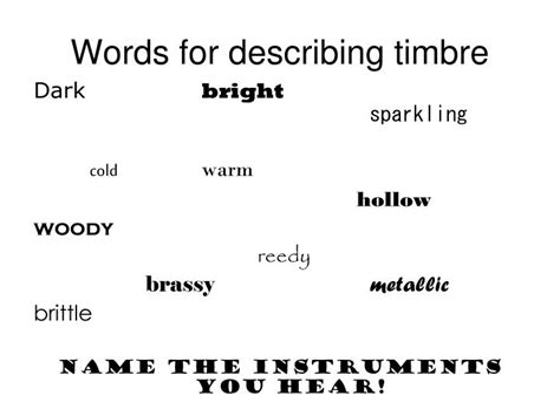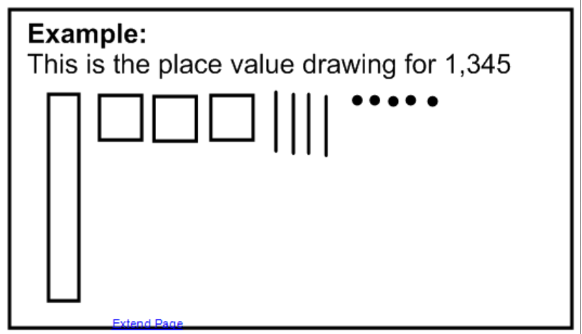PERCUSSIVE PLACE VALUE
Learning Description
Students will be able to read and write multi-digit whole numbers up to 10,000 using sound to model base-ten numerals and expanded form. Students will demonstrate their understanding by creating a sound for different numbers to represent the different place values of each. The larger the value, the louder the sound.
Learning Targets
"I Can" Statements
“I Can…”
-
I can explain what place value is.
-
I can determine the value of digits based on their place.
-
I can represent place value in multiple ways (concrete and abstract).
-
I can represent values of digits using musical concepts.
Essential Questions
-
What is place value?
-
How can we compare numbers?
-
How can I use musical concepts to represent place value?
Georgia Standards
Curriculum Standards
Grade 3:
3.NR.1.1 Read and write multi-digit whole numbers up to 10,000 to the thousands using base-ten numerals and expanded form.
3.NR.1.2 Use place value reasoning to compare multi-digit numbers up to 10,000, using >, =, and < symbols to record the results of comparisons.
Arts Standards
Grade 3:
ESGM3.CR.2 Compose and arrange music within specified guidelines.
ESGM3.PR.2 Perform a varied repertoire of music on instruments, alone and with others.
- Perform rhythmic patterns with body percussion and a variety of instruments using appropriate technique.
- Arrange rhythmic patterns to create simple forms and instrumentation.
ESGM3.RE.1 Listen to, analyze, and describe music.
ESGM3.CN.1 Connect music to the other fine arts and disciplines outside the arts.
South Carolina Standards
Curriculum Standards
Grade 3:
3.NSBT.5 Compare and order numbers through 999,999 and represent the comparison using the symbols >, =, or <.
Arts Standards
Anchor Standard 1: I can arrange and compose music.
Anchor Standard 4: I can play instruments alone and with others.
Anchor Standard 6: I can analyze music.
Anchor Standard 9: I can relate music to other arts disciplines, other subjects, and career paths.
Key Vocabulary
Content Vocabulary
- Place value - The value of each digit in a number based on its position
- Ten-thousands - The fifth position represents the number of ten-thousands
- Thousands - The fourth position represents the number of thousands
- Hundreds - The third position represents the number of hundreds
- Tens - The second position represents the number of tens
- Ones - The rightmost position (1st place) represents the number of ones
- Expanded form - A way of writing numbers to show the value of each digit according to its place value; it breaks down a number by expressing it as the sum of each digit multiplied by its place value
- Standard form - The way of writing numbers using digits, without breaking them down by place value or expanding them
- Numerical - Using digits to represent quantities, values, or amounts
Arts Vocabulary
- Musical phrase - A short musical idea or "thought" that functions similarly to a sentence in language
- Steady beat - The continuous, consistent pulse in music that you can tap your foot or clap along to; it serves as the foundation of the rhythm, like the heartbeat of a piece of music
- Dynamics - The loudness or softness of a sound
- Timbre - The characteristic quality of a sound that distinguishes it from other sounds, even when they have the same pitch and loudness
Materials
- Dry-erase boards and markers or smart board
- Cards with numbers written on them
- Steady Beat Practice
- Optional: Assorted unpitched percussion instruments (drums, rhythm sticks, triangle, etc.)
- Optional: Boomwhackers
- Optional extension: Up-Town Funk.
Instructional Design
Opening/Activating Strategy
- Introduce "echoing" body percussion sound and steady beat.
- Teacher will demonstrate a four beat pattern using body percussion, and students will echo the pattern.
- Examples of body percussion include snapping, clapping, patting, stomping, etc.
- Compare visual representations of both steady beat and non steady beat patterns.
Steady vs. Non Steady
| | | | | | | | ||| | || |
Warm-up extension:
- Students will recognize timbre by listening to various instruments and describing the sounds.

- Allow students to demonstrate steady and non steady beats using body percussion. Play Up-Town Funk to assist students.
Work Session
- The teacher will demonstrate dynamics and steady beat while creating a composition illustrating place value (such as the example below). The students will then guess what the number is and how they understood the value of it.
- Example:
- 1,324
- 1,000 = 1 loud stomps
- 300 = 3 medium claps
- 20 = 2 snaps
- 4 = 4 shhh sounds
- Example:
- Assign each student a number. Have students think about how they can represent the number using body percussion and dynamics.
- Put students into pairs. Students will stand/sit back to back and take turns listening to each other's performances. They will record the number they hear in standard form.
- Next, assign each pair a new number. Together, they will compose a musical phrase using body percussion that they will perform for the class.
- Each sound will represent a given place value and its dynamics will identify its value.
- Example:
- 1,324
- 1,000= 1 loud stomps
- 300= 3 medium claps
- 20= 2 snaps
- 4= 4 shhh sounds
Closing Reflection
- Two groups will perform their musical phrases for their classmates consecutively. Discuss appropriate audience participation and etiquette prior to performances.
- Audience members should try to decipher both the performers’ numbers.
Assessments
Formative
Teachers will assess students’ understanding of place value by observing students' participation in the activator, ability to interpret a number based on dynamics, and collaboration with their partners to compose a musical phrase that uses dynamics to express place value.
Summative
CHECKLIST:
- Students can compose and perform a musical phrase that uses dynamics to represent place value.
- Students can compare the values of two numbers and determine the number that has the greater value.
DIFFERENTIATION
|
Accelerated:
Remedial:
|
ADDITIONAL RESOURCES
|
● What Is Timbre In Music, Sound And Voice? With Examples - Music Industry How To |
CREDITS
U.S. Department of Education- STEM + the Art of Integrated Learning
Ideas contributed by: SAIL Grant Teacher Leaders, Maribeth Yoder White
*This integrated lesson provides differentiated ideas and activities for educators that are aligned to a sampling of standards. Standards referenced at the time of publishing may differ based on each state’s adoption of new standards.
Revised and copyright: June 2025 @ ArtsNOW

